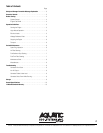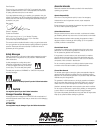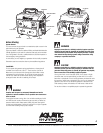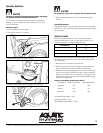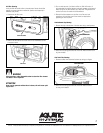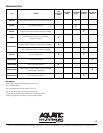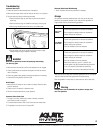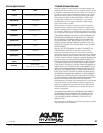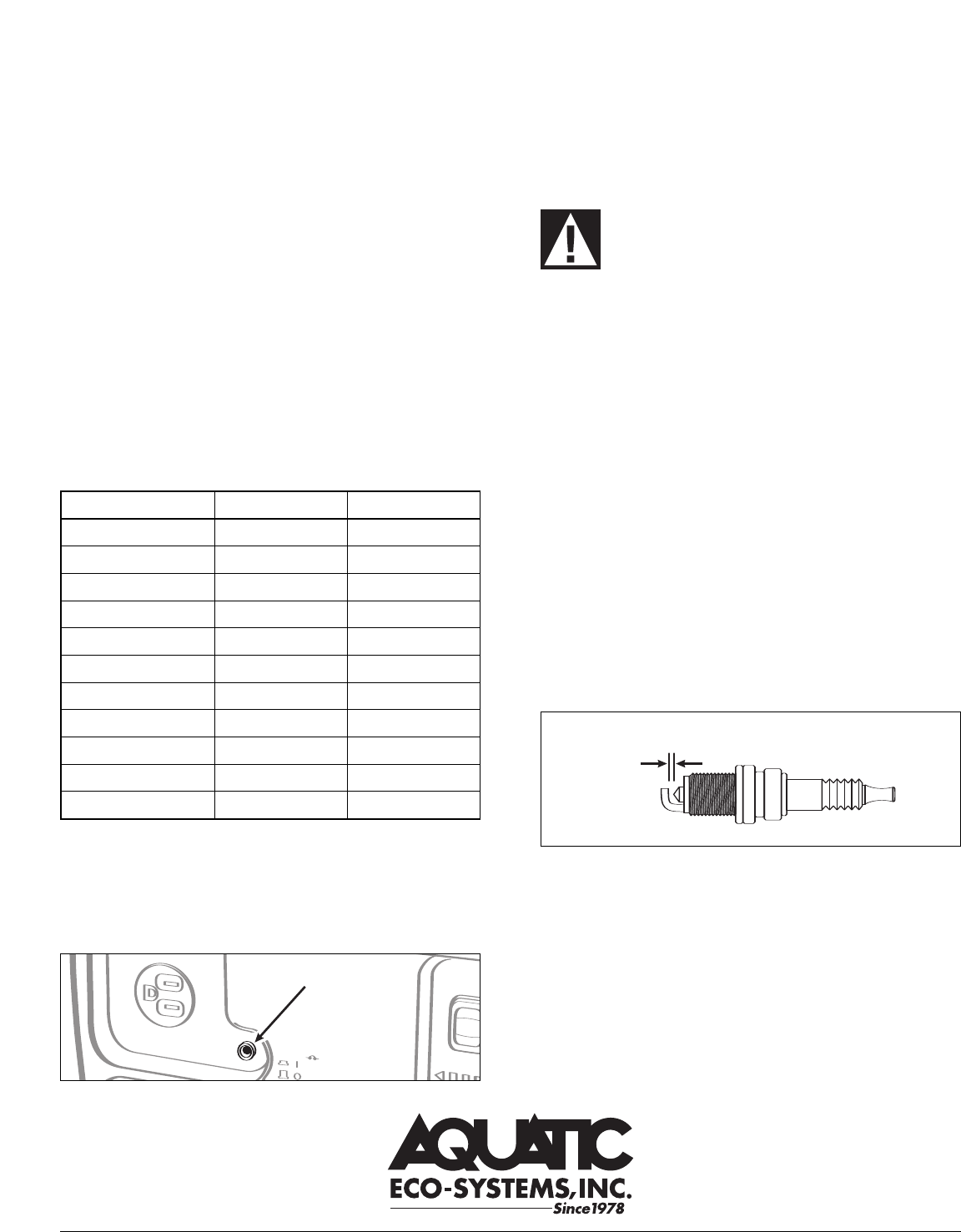
Fat Cat
™
Products Made Exclusively for Aquatic Eco-Systems, Inc. • Phone: 407-886-3939 • Fax: 407-886-6787 • aes@aquaticeco.com • aquaticeco.com
6
T
ake care when adding electrical loads to the generator. Never connect any
load to the generator before starting the engine. The safe way to manage
generator power is to sequentially add loads:
1. Start the engine and allow it to warm up.
2. Plug in the first load (turned off), which is preferably the largest load.
3. Let the generator output stabilize (engine runs smoothly and device
o
perates correctly).
4. Plug in and turn on the next load.
5
. Let the generator stabilize again.
Repeat steps 4 and 5 for each additional load.
If an appliance begins to operate abnormally, becomes sluggish
or stops suddenly, then turn it off and disconnect it.
ATTENTION
Heavy overloading will trip the circuit breaker.
Slight overloading may not trip the circuit breaker
but will shorten the life of the generator.
W
attage Reference Chart
*Wattages listed are for reference only. Check the appliance or tool for
the actual wattage.
If the load exceeds the rated capacity of the generator, then the AC
protector will trip, stopping the electricity flow to connected devices.
Reduce the load to within the rated capacity and press the reset
button to use the generator again.
S
topping the Engine
Turn off all attached appliances and tools and unplug their cords. Move the
A
C switch, then the engine switch and finally the fuel lever to "off" positions.
Transport
Make sure the engine switch and fuel lever are in the "off" positions.
K
eep the generator level to prevent fuel spillage. Fuel vapor or spillage
may ignite.
WARNING
C
ontact with a hot engine or exhaust system can cause serious
burns or fires. Let the engine cool before transporting the generator.
T
ake care not to drop or strike the generator while transporting. Do not
place heavy objects on the generator.
Never operate a damaged or defective motor! When adjusting or making
repairs to your generator disconnect the spark plug wire from the spark
plug and place that wire where it cannot contact the spark plug. Do not
use a garden hose to clean the generator because water can enter the fuel
system and cause problems.
Periodic Maintenance
Spark Plug Inspection
1. Remove the spark plug cap.
2. Remove the spark plug.
3.
Inspect the spark plug—it should be a tan color. Discard if the
insulator is cracked or chipped.
4. Clean the spark plug with a wire brush if it will be reused.
5. Measure the plug gap with a feeler gauge. Make sure the plug gap
is between .028 and .031 in (.7 and .8 mm).
6. Thread the spark plug back in by hand to prevent cross-threading.
The correct torque to use is 14 ft-lbs (20 Nm).
ATTENTION
The spark plug must be securely tightened. An improperly tightened
spark plug can become very hot and could damage the engine.
AC
PRO
TEC
TOR
~
RE
SET
OF
F
AC
~
OUT
ON
ENG
-
SW
1
0
STO
P
RESET BUTTON
Tool/Appliance Rated (Running) Watts Surge (Starting) Watts
Light Bulb 100 100
Microwave Oven (625 W) 625 625
Battery Charger (15 amps) 380 380
Computer, Desktop 100 400
Computer, Monitor 100 200
AM/FM Clock Radio 300
—
Small Hand Drill 500 750
Jigsaw 600 80
Home Security System 100 300
Small T.V. 400 —
Slow Cooker 450 —
.7 - .8 mm (.028 - .031 in.)




